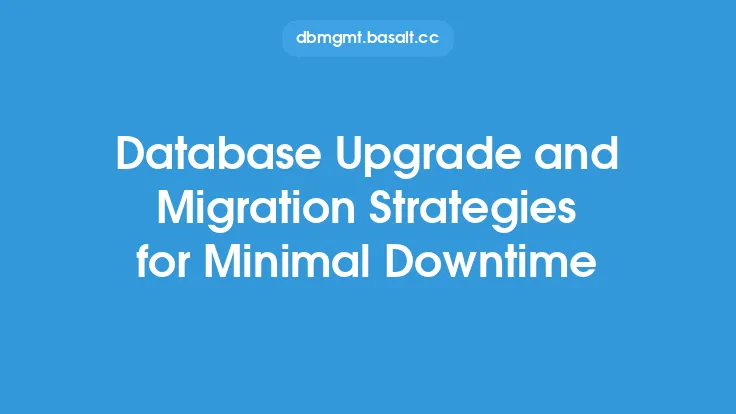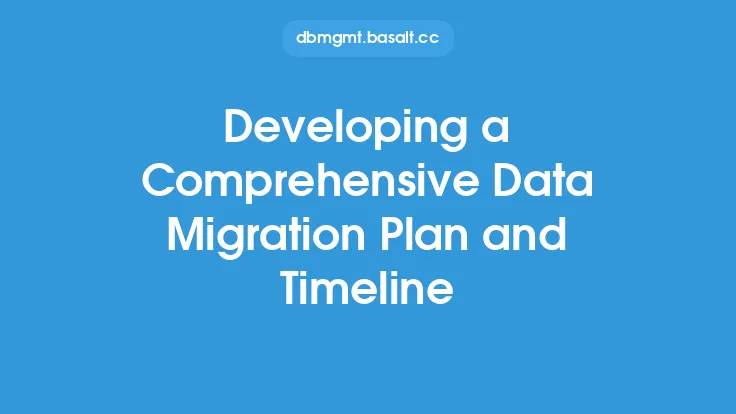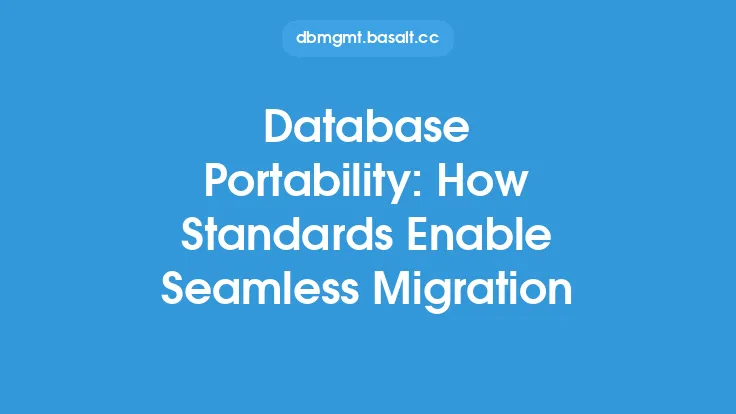When it comes to database transition, one of the most critical aspects to consider is data migration. This process involves transferring data from one system, format, or storage device to another, and it requires careful planning and execution to ensure a seamless transition. A well-planned data migration strategy is essential to minimize downtime, prevent data loss, and ensure that the new system is fully functional and operational.
Understanding Data Migration
Data migration is a complex process that involves several steps, including data assessment, data cleansing, data transformation, and data loading. It requires a thorough understanding of the existing data, the new system, and the requirements of the migration project. The goal of data migration is to transfer data from the old system to the new system with minimal disruption to business operations and without compromising data integrity.
Types of Data Migration
There are several types of data migration, including:
- Big Bang Migration: This approach involves migrating all data at once, which can be a high-risk strategy that requires significant downtime.
- Trickle Migration: This approach involves migrating data in small batches, which can be a lower-risk strategy that allows for more flexibility and testing.
- Phased Migration: This approach involves migrating data in phases, which can be a more manageable strategy that allows for testing and validation of each phase before proceeding to the next one.
- Incremental Migration: This approach involves migrating data in increments, which can be a more efficient strategy that allows for continuous data transfer and validation.
Data Migration Techniques
There are several data migration techniques that can be used, including:
- ETL (Extract, Transform, Load): This technique involves extracting data from the old system, transforming it into a format compatible with the new system, and loading it into the new system.
- ELT (Extract, Load, Transform): This technique involves extracting data from the old system, loading it into the new system, and transforming it into a format compatible with the new system.
- Data Replication: This technique involves replicating data from the old system to the new system, which can be used for real-time data migration or for creating a backup of the data.
Data Migration Tools and Software
There are several data migration tools and software available, including:
- Oracle Data Integrator: A comprehensive data integration platform that provides a range of tools and features for data migration.
- Microsoft SQL Server Integration Services: A platform for building high-performance data integration and workflow solutions.
- Informatica PowerCenter: A comprehensive data integration platform that provides a range of tools and features for data migration.
- Talend: An open-source data integration platform that provides a range of tools and features for data migration.
Best Practices for Data Migration
To ensure a seamless database transition, it's essential to follow best practices for data migration, including:
- Develop a comprehensive data migration plan: This plan should include a detailed timeline, budget, and resource allocation.
- Conduct thorough data assessment and cleansing: This step is critical to ensure that the data is accurate, complete, and consistent.
- Use automated data migration tools: Automated tools can help to reduce the risk of errors and improve the efficiency of the migration process.
- Test and validate the data: Thorough testing and validation are critical to ensure that the data is accurate and complete.
Common Challenges in Data Migration
Data migration can be a complex and challenging process, and there are several common challenges that can arise, including:
- Data quality issues: Poor data quality can lead to errors, inconsistencies, and inaccuracies in the migrated data.
- System compatibility issues: Compatibility issues between the old and new systems can lead to errors, delays, and additional costs.
- Data transformation issues: Data transformation can be a complex process, and errors can occur if the data is not transformed correctly.
- Downtime and business disruption: Data migration can require significant downtime, which can disrupt business operations and impact revenue.
Conclusion
Data migration is a critical aspect of database transition, and it requires careful planning and execution to ensure a seamless transition. By understanding the different types of data migration, techniques, and tools available, and by following best practices, organizations can minimize the risks and challenges associated with data migration and ensure a successful transition to the new system. Whether you're migrating data from an old system to a new one, or from one format to another, a well-planned data migration strategy is essential to ensure that the data is accurate, complete, and consistent, and that the new system is fully functional and operational.





